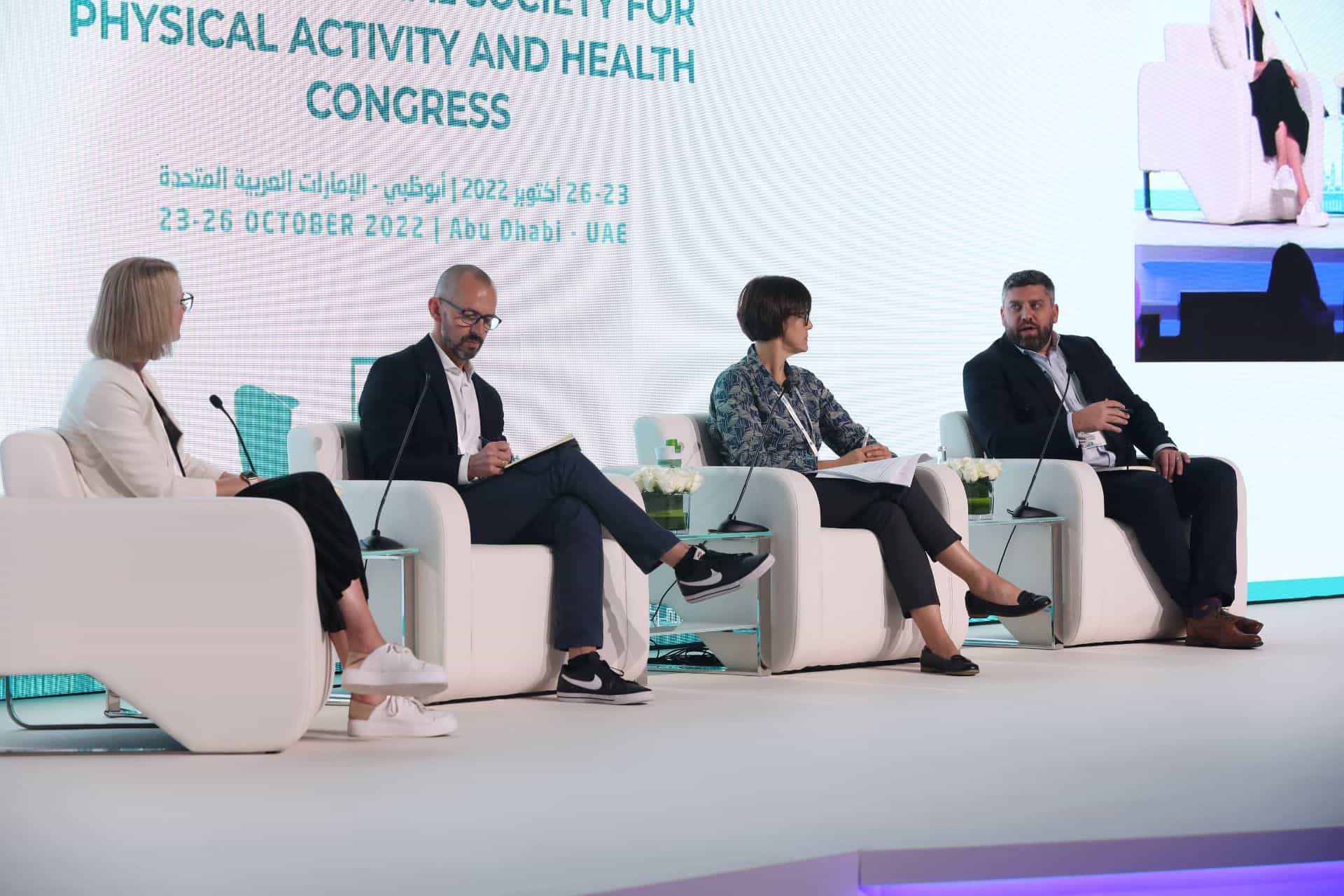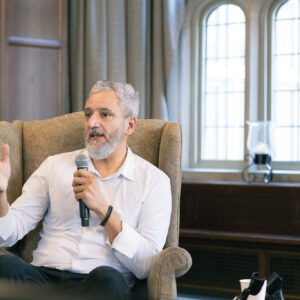Symposium
People, Health and Place in Latin America and Latinos: Lessons for Global Physical Activity Promotion
Symposium Abstract
Title: People, Health and Place in Latin America and Latino Communities: Lessons for Global Physical Activity Promotion
Purpose: To present and discuss the advancements and gaps on people, health and place research in Latin America and Latino Communities in United States, underscoring policy and practice physical activity research and promotion lessons for the region and the globe.
Description: Physical inactivity remains a global public health concern and it remains at highest levels, particularly among most vulnerable populations. Latin America and Latino communities experience greatest levels of social, economic, health and spatial disparities and the highest levels of physical inactivity in the world. As communities across the globe are experiencing growing inequalities and inequities, physical activity research, policy and capacity in the region can help informing our global physical activity community efforts to reduce physical inactivity worldwide. This symposium will provide an opportunity to present and discuss research findings among communities experiencing high levels of both physical inactivity and, social and spatial inequalities in United States, Mexico and Brazil. Dr. Reis (United States and Brazil), will chair the session, and Dr. Salvo (United States), Dr. Jauregui (Mexico) and Dr. Hino (Brazil) will present the findings from their studies focusing on people, health and place in their regions highlighting the inequalities and physical activity contextual factors. Dr. Reis will then reflect on how the findings may inform physical activity research, practice and policy in communities experiencing high levels of inequalities across the globe.
Chair: Rodrigo Siqueira Reis, PhD; People, Health & Place Research Unit, Brown School, Washington University in Saint Louis (USA); Federal University of Parana (Brazil).
Presenter 1: Adriano Akira Ferreira Hino, PhD; Graduate Program in Health Sciences; Pontifical Catholic University of Parana, Curitiba, Brazil.
Presenter 2: Alejandra Jauregui; Departamento de Actividad Física y Estilos de Vida Saludables, Centro de Investigación en Nutrición y Salud, Instituto Nacional de Salud Pública, Cuernavaca, México
Presenter 3: Deborah Salvo, PhD; People, Health & Place Lab, Department of Kinesiology & Health Education, The University of Texas at Austin, Austin, Texas, USA
Discussant/moderator: Rodrigo Siqueira Reis, PhD; People, Health & Place Research Unit, Brown School, Washington University in Saint Louis (USA); Federal University of Parana (Brazil).
Research Abstract 1
Title: Environmental correlates of physical activity in Brazil: results from a systematic review
Adriano Akira Hino, Cassiano R. Rech, Danielle Macedo, Thamires G. Coco, Isabella R. Souza, Paulo H. Guerra
Background: Environmental correlates have been recently studied across different part of the Brazil across lifespan, however, no studied has summarized these evidence.
Purpose: The purpose of this study was to describe the environmental correlates of physical activity in Brazil.
Methods: A systematic review of literature was conducted following the PRISMA statement. The searches were conducted until December of 2021 in ten electronic databases combining key-words designed to identify correlates of physical activity studies in Brazil (PROSPERO# CRD42021258588). Were included original quantitative observational studies, published in peer-reviewed journals, had the physical activity as outcome and conducted in Brazil. Environmental correlates were identified manually and systematically during the data extraction. The consistency of the association was evaluated using the proportion of association stratified by age-group.
Results: A total of 95 studies included at least one environmental correlate. The majority of environmental correlates studies were published after 2017, using subjective measures of the environmental variables, with adults (18 to 59 years old) adopting a cross-section design. Most of 1,357 associations identified were related to safety (crimes and traffic related), access to physical activity sources, sanitation, garbage and pollution conditions and presence of sidewalk/bike paths. Access to physical activity sources, density of public transit and use of public spaces were consistently associated to higher physical activity levels.
Conclusions: The studies on environmental correlates have increased in Brazil. Some consistent associations were identified, however, most of the associations were from cross-sectional studies, using subjective measures of environmental and physical activity variables and focusing on adults.
Practical implications: Future studies should incorporate longitudinal design, subjective and objective measures of environment and focused on children.
Funding: This study was supported by National Council for Scientific and Technological Development (CNPq) under the process no. 443193/2020-7
Research Abstract 2
Built Environment and Physical Activity Research in Mexico: Lessons Learned Over the Past 10 Years
Alejandra Jauregui, César Hernández-Alcaraz, Eugen Resendiz, Deborah Salvo
Background: Compelling evidence links physical activity with environmental characteristics in high-income countries; evidence among low- and middle-income countries is scarce, but suggests differences to what has been reported for high-income countries.
Purpose: To describe the associations observed and lessons learned over the past 10 years while assessing Mexico’s built environment’s effects on physical activity.
Methods: We compiled the evidence produced in Mexico over the past 10 years regarding the association between built environmental features and physical activity. The main overarching findings of these studies were extracted and summarized.
Results: Access to parks, public open spaces, aesthetics, safety from crime, and access to public transportation are important correlates of physical activity among Mexicans, namely active travel and leisure time physical activity. However, studies in Mexico have found no association or counterintuitive associations for other environmental features usually thought to be important for increasing activity levels, such as the walkability index or its individual components (street connectivity, land-use mix, residential density). Counterintuitive findings suggest that physical activity in Mexico may be occurring despite the lack of adequate environmental conditions, probably due to the necessity to get from one place to another. Findings also suggest differences in these associations between females and males, as well as an inequitable distribution of environmental features conducive to more physical activity, favoring high-income neighborhoods.
Conclusions: Findings contrast with those reported in high-income countries, underscoring the importance of considering the local context when developing strategies to promote physical activity in Mexico. They also highlight the importance of improving the conditions under which necessity-driven physical activity.
Practical implications: Findings underscore the importance of using contextually relevant evidence to inform local physical activity policy and practice.
Funding: CDC Foundation, SALURBAL, Canadian Institutes of Health Research (CIHR), International Health Grant, the Public Health Agency of Canada (PHAC), and Fulbright-García Robles.
Research Abstract 3
Contrasting environments for physical activity in the United States versus Latin America among Latino immigrants
Deborah Salvo, Aine O’Connor, Eugen Resendiz, Carolina Andrade, Nancy Perez-Flores, Alejandra Jauregui, Cesar Hernandez, Michael Park, Leopoldo Cabassa
Background: Immigrant populations face multiple health and social challenges, including rapidly shifting patterns and levels of physical activity. In this study, we contrast the characteristics of neighbourhood environments in the United States (US) with those of origin-country environments among recent immigrants from Latin America; as well as their pre-migration to post-migration physical activity levels.
Methods: Using online survey panel methods, we recruited and collected data from 210 recent immigrants from Latin America (<10 years in the US). Adapted versions of the Past-Week Modifiable Physical Activity Questionnaire (PW-MAQ), and of the Abbreviated Neighbourhood Environment Walkability Scale (NEWS) were used to assess pre-migration and post-migration physical activity and neighbourhood environments.
Results: Data analysis will be finalised by the ISPAH 2024 Congress. Results to be presented will contrast key neighbourhood environment constructs before and after migration to the US, including: perceived measures of (a) residential density, (b) destination accessibility, (c) public open space availability, (d) public transit availability, (e) safety from crime, (f) safety from traffic, and (g) pedestrian and cycling infrastructure. The sample will be characterised based on their degree of pre- to post-migration change in physical activity levels.
Conclusions: Studies from Latin America have shown that an important source of physical activity is active travel, due to economic necessity and ubiquitous public transit options in Latin American cities. Latin American studies also report that settings for social interaction are critical for promoting active leisure among Latinos. It is possible that the stark change in neighbourhood environments experienced by Latin American immigrants contributes to physical activity declines.
Practical Implications: Latino immigrants have lower levels of physical activity (particularly in the leisure domain) than their white counterparts. Understanding context change among immigrants is critical for designing culturally-appropriate solutions to support healthier transitions and active living this high-need group.
Submitting Author
Rodrigo Reis
Population Group
Disadvantaged groups
Study Type
Other
Setting
Community



